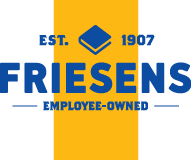June 17, 2019
Paper, Paper, Paper
The good news is that we have returned, at least for the moment, to a place of greater stability with regards to paper supply for the book industry in North America. Paper is generally easy to buy right now, lead times have returned to normal (compared to the long lead times we encountered in 2018), and it is fairly quiet regarding pricing. That sounds much better, doesn’t it?
It is better! Without a doubt! The supply of paper is (at least for now) not “stressed” compared to demand, and that allows us to enjoy a less challenging demand/supply environment.
Possible ripple effect
However, there have been two fairly consequential changes on the supply side recently that may have a ripple effect over the next 3 – 6 months. Verso Paper (the manufacturer of the Sterling Premium and Anthem Plus coated paper grades) announced recently that they will be closing their mill in Luke, Maryland, effective June 30, 2019. This will remove approximately 480,000 tons of CFS (coated freesheet) paper from the North American (NA) market annually. And, while this is now “old news”, the closure of Georgia-Pacific’s Port Husdon, Louisiana mill at the end of March has affected and will affect the UFS (uncoated freesheet) paper market. That mill produced 630,000 tons of UFS paper (#2 offset and cut-size copy paper) annually.
How this will all play out is not clear. If overall demand for paper continues to wane (it has declined by 3% – 5% annually of the last several years in NA), then the effect of these closures may not significantly change the demand and supply balance in the marketplace. But if demand does not decline further or increases in Q3, then I expect that there will be a tightening in the paper market. One commentator has predicted that “[coated] grades will tighten after Verso’s Luke mill closure in June, but CFS prices should remain flat for the year” and noted that “growing UFS [uncoated] imports are filling the void caused by G-P’s closure”. RISI is predicting that “UFS pricing [will] remain flat for the remainder of 2019.”
It is certainly possible and preferable that the market remains stable, that lead times for paper remain “normal”, and that there are no price increases announced (on top of those increases that were implemented in 2018).
Extra-bulk paper
One of the specialty papers that has been used historically in book manufacturing is uncoated “extra-bulk” (EB) paper. There are a small number of paper mills that produce EB paper now in North America, and our go-to mill for this grade has been Glatfelter for many years. Glatfelter recently sold their fine paper division so the mill and paper name is now Pixelle.
So why extra-bulk? EB paper is made in a way to bulk up the sheet and therefore add more caliper to the finished product. This can have the effect of making a finished book appear more substantial (thick) without affecting the actual weight. For example, using the grade/spec that Friesens buys and inventories [Glatfelter/Pixelle 50# EB Offset 360ppi (in white and natural shades)] for a 400-page book, the spine thickness (text pages only) would be 1.1 inches using the 50# EB paper, compared to 0.78 inches with a standard 50# offset paper. You would get a thicker book with the EB paper but the weight of the book would remain the same.
One European paper manufacturer describes it in this way:
“… bulky book paper gives the impression of a thicker, stiffer paper but with the same weight as a standard paper. The extra bulk enhances the reader’s perceived value and enables you to lower postal and production costs without sacrificing the quality.”
And PrintWiki provides this definition:
“A type of paper having a thickness (called bulk or caliper) greater than that of other papers of the same basis weight. High-bulk paper is specially manufactured and is usually used for book paper to increase the thickness of low-page-count books, such as fiction and children’s books.”
You also get a different tactile feel with EB paper compared to the standard smooth finish of offset paper. It a different sensation for the reader, and for some book designers and publishers, the tactical sensation is preferable.
If you have questions or would like more information about extra-bulk paper, please contact your Friesens Sales Rep.







